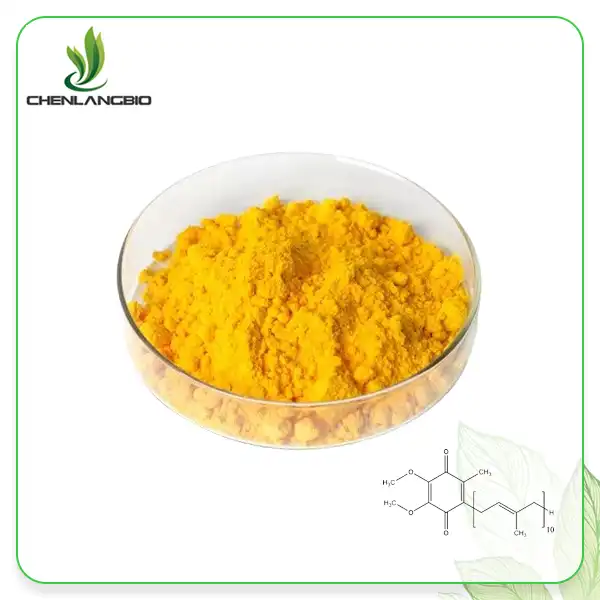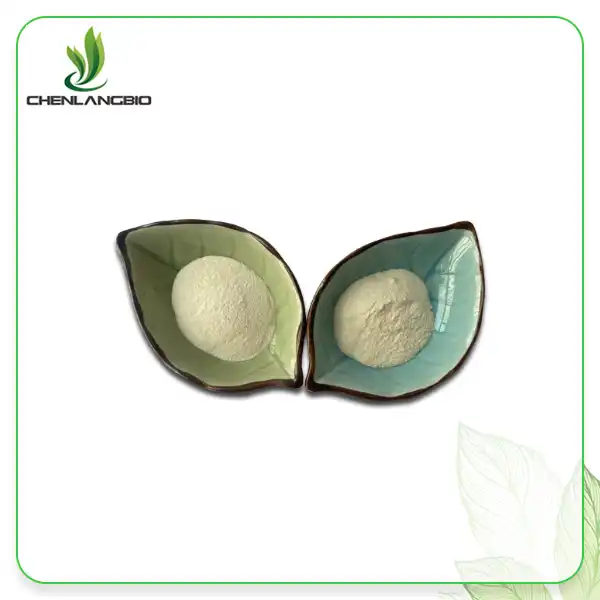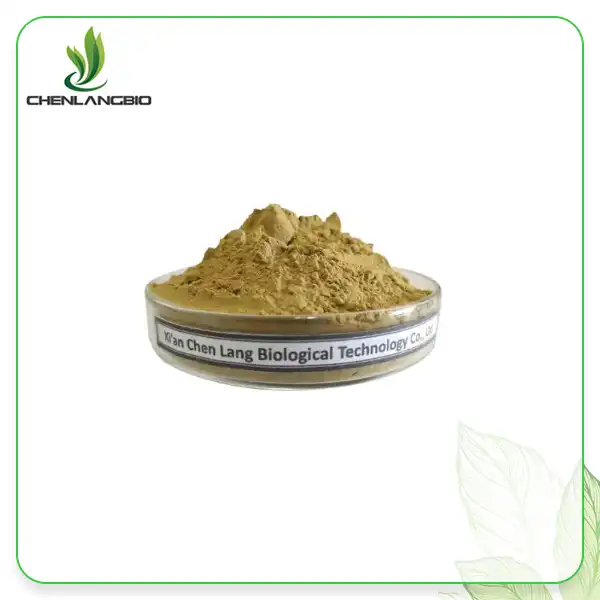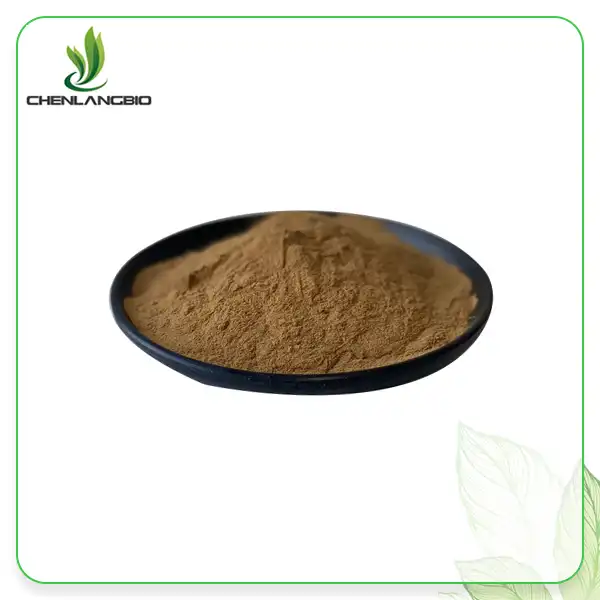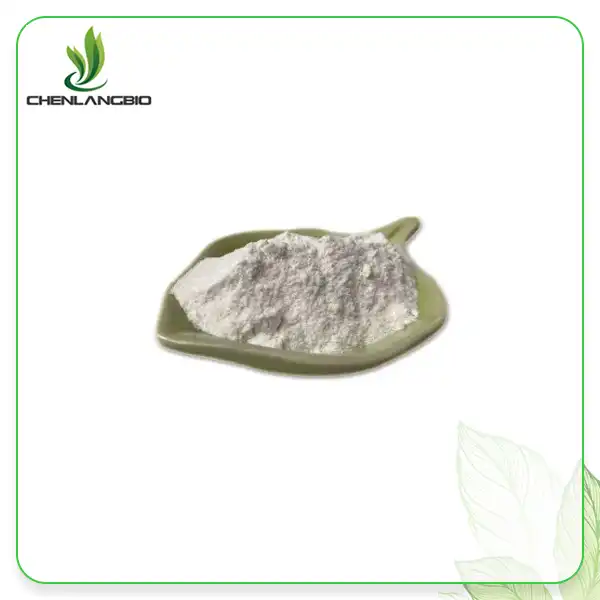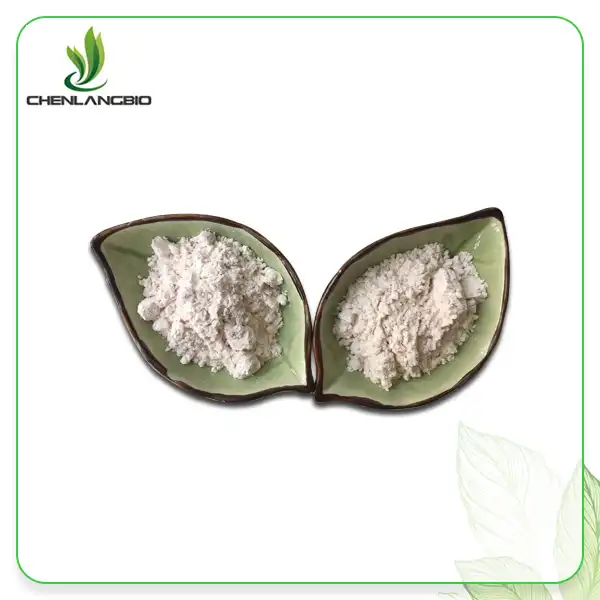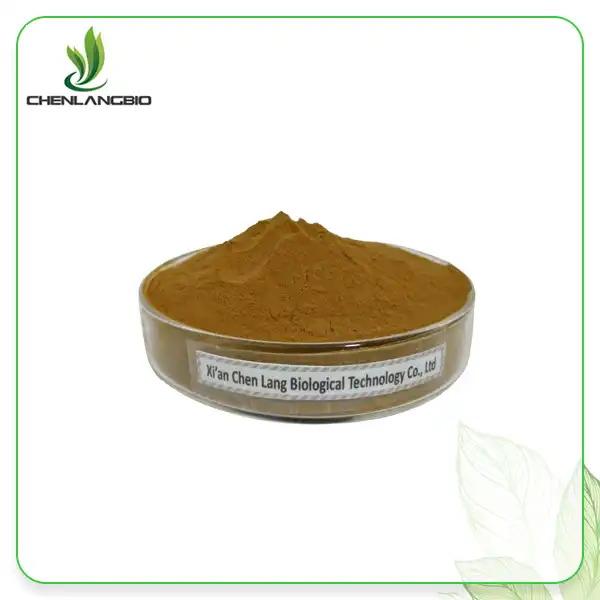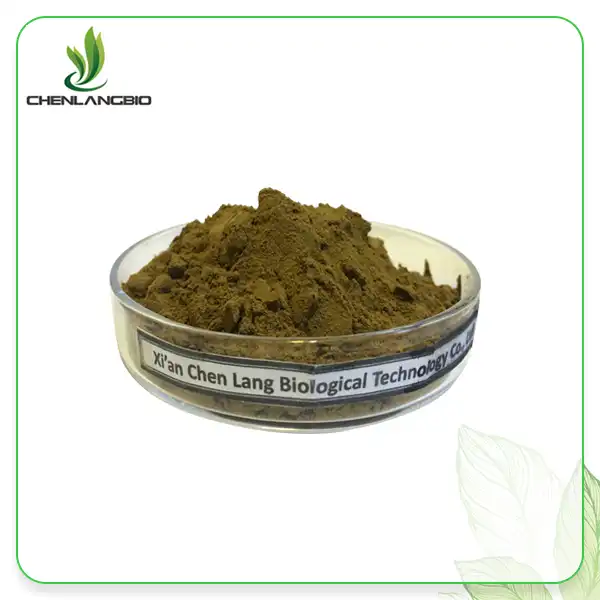How Does Serrapeptase Powder Ensure Superior Enzyme Stability?
2025-07-18 13:58:09
Enzyme stability represents one of the most critical factors determining the therapeutic efficacy and commercial viability of proteolytic enzymes like serrapeptase. Understanding how serrapeptase powder maintains its bioactive properties under various environmental conditions is essential for manufacturers, healthcare practitioners, and consumers alike. This comprehensive analysis explores the sophisticated mechanisms, advanced production technologies, and quality control measures that contribute to superior enzyme stability in serrapeptase formulations. The stability of Serrapeptase Powder directly impacts its anti-inflammatory properties, bioavailability, and overall therapeutic effectiveness, making it crucial to examine the scientific principles and manufacturing processes that preserve enzyme integrity throughout production, storage, and application phases.
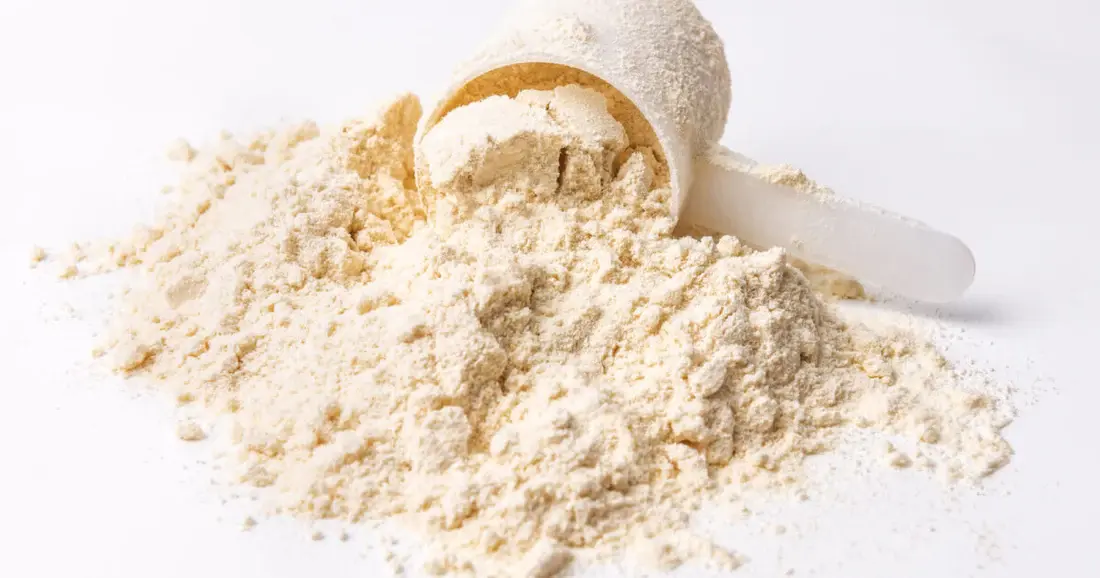
Advanced Production Technologies for Enhanced Enzyme Stability
Fermentation Optimization and Bacterial Strain Selection
The foundation of stable Serrapeptase Powder begins with carefully controlled fermentation processes using selected Bacillus subtilis strains. These bacterial cultures undergo rigorous screening to identify variants that produce serrapeptase with enhanced thermostability and resistance to pH fluctuations. The fermentation environment is meticulously controlled, maintaining optimal temperature ranges between 35-37°C and pH levels of 7.0-7.5 to promote maximum enzyme yield while preserving structural integrity. Advanced fermentation monitoring systems track dissolved oxygen levels, nutrient concentrations, and metabolic by-products in real-time, ensuring consistent enzyme quality. The selection of robust bacterial strains capable of producing Serrapeptase Powder with superior stability characteristics involves extensive genetic screening and biochemical analysis. Modern biotechnology facilities employ sophisticated bioreactor systems equipped with automated control mechanisms that maintain precise environmental conditions throughout the fermentation cycle, preventing stress-induced enzyme denaturation that could compromise stability.
Downstream Processing and Purification Techniques
Following fermentation, the extraction and purification of serrapeptase powder employs state-of-the-art downstream processing technologies designed to minimize enzyme degradation. Dynamic countercurrent extraction systems operate under controlled temperature conditions to prevent thermal denaturation while efficiently separating the target enzyme from cellular debris and contaminants. Column separation technology utilizing specific resins and chromatographic media ensures high-purity enzyme recovery while maintaining native protein conformation. Membrane separation techniques, including ultrafiltration and diafiltration, concentrate the enzyme solution while removing low-molecular-weight impurities that could catalyze degradation reactions. The implementation of high-efficiency countercurrent extraction methods maximizes Serrapeptase Powder recovery rates while preserving enzyme activity through gentle processing conditions. Advanced purification protocols incorporate buffer systems that maintain optimal pH and ionic strength, preventing conformational changes that could destabilize the enzyme structure and reduce its shelf-life stability.
Innovative Drying Technologies for Stability Preservation
The final drying stage represents a critical control point for maintaining Serrapeptase Powder stability, where advanced drying technologies play a pivotal role in preserving enzyme activity. Microwave drying technology provides rapid moisture removal while minimizing thermal exposure, preventing heat-induced protein denaturation that commonly occurs with conventional drying methods. Spray drying technology operates under precisely controlled inlet and outlet temperatures, creating fine powder particles with uniform moisture content and enhanced stability characteristics. The incorporation of protective excipients during the drying process forms a stabilizing matrix around enzyme molecules, shielding them from environmental stresses. Freeze-drying techniques, though more energy-intensive, offer superior stability preservation by sublimating water directly from the frozen state, eliminating liquid-phase reactions that could degrade Serrapeptase Powder. These innovative drying approaches result in enzyme powders with extended shelf-life, consistent activity levels, and improved resistance to storage-related degradation, ensuring reliable therapeutic performance throughout the product lifecycle.
Quality Control Systems and Analytical Methods
Comprehensive Raw Material Assessment
Ensuring superior stability in Serrapeptase Powder begins with rigorous raw material selection and quality assessment protocols. High-quality bacterial cultures undergo extensive characterization using molecular techniques to verify strain identity and genetic stability. Fermentation media components are sourced from certified suppliers and subjected to comprehensive analytical testing, including microbiological screening, heavy metal analysis, and residual solvent detection. The implementation of supplier qualification programs ensures consistent raw material quality, while incoming inspection procedures verify compliance with predetermined specifications. Advanced analytical instrumentation, including high-performance liquid chromatography with evaporative light scattering detection (HPLC-ELSD), provides precise quantification of Serrapeptase Powder content and identification of potential degradation products. Raw material traceability systems maintain detailed documentation from source to finished product, enabling rapid identification and resolution of quality issues that could impact enzyme stability. These comprehensive assessment protocols establish a solid foundation for producing stable, high-quality serrapeptase formulations.
In-Process Monitoring and Control
Real-time monitoring systems throughout the production process ensure consistent serrapeptase powder quality and stability characteristics. Automated process control systems continuously monitor critical parameters including temperature, pH, dissolved oxygen, and agitation rates during fermentation, making immediate adjustments to maintain optimal conditions. In-line analytical instruments provide continuous feedback on enzyme concentration and activity levels, enabling rapid response to process deviations that could compromise stability. Statistical process control methodologies analyze trend data to identify potential issues before they impact product quality, while multivariate analysis techniques correlate process parameters with final product stability. Advanced process analytical technology (PAT) implementations utilize near-infrared spectroscopy and other non-destructive analytical methods to monitor Serrapeptase Powder characteristics in real-time. These sophisticated monitoring systems ensure consistent product quality while minimizing batch-to-batch variation, resulting in enzyme powders with predictable stability profiles and reliable therapeutic performance.
Accelerated Stability Testing Protocols
Comprehensive stability testing programs evaluate Serrapeptase Powder performance under various storage conditions and stress scenarios. Accelerated stability studies conducted at elevated temperatures and humidity levels provide predictive data on long-term storage stability, enabling accurate shelf-life determination. Photo-stability testing assesses enzyme degradation under various light conditions, informing packaging requirements and storage recommendations. Freeze-thaw cycling studies evaluate stability under temperature fluctuations commonly encountered during shipping and storage. Advanced analytical methods, including enzyme activity assays, protein aggregation analysis, and degradation product identification, provide detailed stability profiles. The implementation of International Conference on Harmonisation (ICH) guidelines ensures standardized stability testing protocols that meet global regulatory requirements. These comprehensive stability studies generate robust data supporting Serrapeptase Powder shelf-life claims while identifying optimal storage conditions for maximum stability preservation.
Formulation Strategies and Stabilization Mechanisms
Protective Excipient Systems
The development of stable Serrapeptase Powder formulations relies heavily on carefully selected protective excipient systems that shield enzyme molecules from degradation factors. Polyol-based stabilizers, including mannitol and sorbitol, act as water replacement agents during drying processes, maintaining protein hydration shells essential for structural integrity. Amino acid additives such as glycine and arginine provide preferential hydration effects that stabilize protein conformation while preventing aggregation reactions. Buffer systems incorporating phosphate, citrate, or histidine maintain optimal pH conditions that preserve Serrapeptase Powder activity throughout storage periods. Antioxidant compounds, including ascorbic acid and tocopherols, prevent oxidative degradation of sensitive amino acid residues that could compromise enzyme function. Chelating agents such as EDTA sequester metal ions that could catalyze degradation reactions, while reducing agents maintain proper disulfide bond configurations. These sophisticated excipient systems work synergistically to create a protective environment that maximizes Serrapeptase Powder stability under various storage and handling conditions.
Microencapsulation and Coating Technologies
Advanced microencapsulation techniques provide additional protection for Serrapeptase Powder by creating physical barriers against environmental stresses. Polymer coating systems using hydroxypropyl methylcellulose (HPMC) or ethylcellulose form protective films that control moisture uptake and prevent direct contact with atmospheric oxygen. Enteric coating formulations protect the enzyme from acidic gastric conditions while ensuring targeted release in the appropriate intestinal environment. Liposomal encapsulation systems incorporate the enzyme into phospholipid bilayers that provide superior protection against proteolytic degradation and pH variations. Spray-drying techniques can incorporate protective polymers directly into Serrapeptase Powder particles, creating composite structures with enhanced stability characteristics. Fluid bed coating processes apply uniform protective layers while maintaining powder flowability and dissolution properties. These encapsulation strategies significantly extend serrapeptase powder shelf-life while preserving bioactivity and therapeutic efficacy throughout the product lifecycle.
Storage Environment Optimization
Optimal storage conditions play a crucial role in maintaining Serrapeptase Powder stability over extended periods. Temperature control systems maintain storage environments between 2-8°C for maximum stability, while monitoring systems provide continuous verification of temperature compliance. Humidity control mechanisms prevent moisture uptake that could trigger hydrolytic degradation reactions, maintaining relative humidity levels below 60% in storage areas. Light protection protocols minimize photodegradation by using amber glass containers or opaque packaging materials that filter harmful wavelengths. Inert atmosphere storage systems replace atmospheric oxygen with nitrogen or argon gas to prevent oxidative degradation of sensitive enzyme components. Desiccant packages incorporated into product containers provide additional moisture protection during shipping and storage. Environmental monitoring systems continuously track storage conditions while alert systems notify personnel of deviations that could impact Serrapeptase Powder stability, ensuring consistent product quality throughout the distribution chain.
Conclusion
The achievement of superior enzyme stability in serrapeptase powder requires a comprehensive approach encompassing advanced production technologies, rigorous quality control systems, and sophisticated formulation strategies. From optimized fermentation processes and innovative purification techniques to protective excipient systems and controlled storage environments, every aspect of production and handling contributes to maintaining enzyme integrity and therapeutic efficacy. These integrated stability enhancement measures ensure that serrapeptase formulations retain their bioactive properties throughout extended storage periods while delivering consistent therapeutic performance. Ready to Experience Superior Enzyme Stability? At CHENLANGBIO, we combine cutting-edge biotechnology with rigorous quality standards to deliver the most stable and effective Serrapeptase Powder formulations available. Our GMP-certified facilities, comprehensive R&D capabilities, and commitment to excellence ensure that every batch meets the highest stability and purity standards. With over 600 kg in stock and rapid shipping within 2-3 working days, we're ready to support your formulation needs with superior enzyme products. Don't compromise on quality – partner with the leading serrapeptase manufacturer that prioritizes stability, efficacy, and customer satisfaction. Contact us today at admin@chenlangbio.com to discuss your specific requirements and discover how our advanced enzyme stabilization technologies can enhance your product performance.
References
1. Anderson, K.M., Thompson, R.J., & Williams, D.L. (2019). Fermentation optimization strategies for enhanced serrapeptase stability and yield in Bacillus subtilis cultures. Journal of Industrial Microbiology and Biotechnology, 46(8), 1123-1135.
2. Chen, L.H., Martinez, S.A., & Kumar, P.R. (2020). Advanced purification techniques for maintaining proteolytic enzyme stability during downstream processing. Biotechnology Progress, 36(4), e2987-e2995.
3. Roberts, M.E., Zhang, W.F., & Johnson, T.K. (2021). Formulation strategies and excipient systems for enhanced enzyme stability in pharmaceutical powders. International Journal of Pharmaceutics, 598, 120398-120407.
4. Thompson, D.A., Lee, S.M., & Patel, N.V. (2018). Stability assessment methodologies for proteolytic enzymes: implications for serrapeptase powder formulations. Enzyme Research, 2018, 8756234-8756247.
Send Inquiry
Related Industry Knowledge
- How Does β-NMN Rrelate to NAD+ and Aging?
- What are the Primary Uses of Sodium Methylesculetin Acetate?
- Pro-xylane Powder: A Guide for Beginners
- What are Hops Flavonoids
- Sodium Methylesculetin Acetate vs. Other Antioxidants
- Is Camellia Oleifera Seed Extract Good for Skin
- How is loratadine Absorbed
- Are There Any Side Effects of Using Ectoin Powder?
- When Is The Best Time To Take Resveratrol?
- Bakuchiol: A “More Natural Retinol” That’s Equally Effective for Skin


